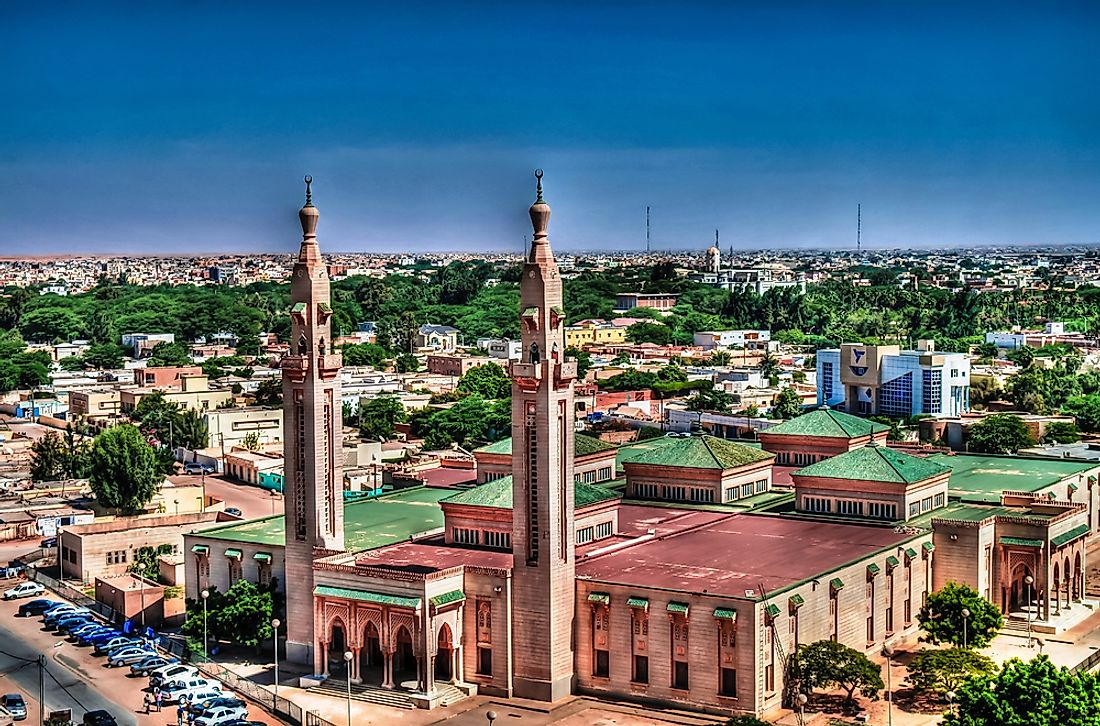What Is The Capital Of Mauritania?

Nouakchott is the capital city of Mauritania. The name can be loosely interpreted to mean ‘place of the winds.’ It is also the largest and the most populous city in Mauritania, being the top economic and administrative center in Mauritania. Nouakchott was a little unknown village up to 1958 when it was selected to be the capital of the nascent nation of Mauritania. During the pre-colonial period and the French rule, it was a small village whose economy solely depended on fishing.
Selection
As Mauritania headed towards attaining its independence, it did not have a capital city or an administrative city. A strategic place had to be selected to serve this purpose. Nouakchott was selected by President Moktar Ould Daddah and his advisors. Nouakchott was chosen due it is centrality. Being remote, development activities started almost immediately to expand the city and enable it to accommodate approximately 15,000 people. Currently, the city is Mauritania’s economic hub and host several institutions of higher learning.
Geography
Nouakchott is one of the largest cities covered by the Sahara Desert. It is located on the Atlantic coastline in West Africa. Nouakchott is only a few meters above the sea level, relatively flat, and its coastline mostly comprises of sandy beaches. The city is largely affected by sand dunes which are located on its eastern side. Nouakchott experiences hot and dry climatic conditions all through the year. The temperatures are usually mild during the night. The average high temperatures are around 33 degrees Celsius. The city receives an average rainfall of 94 mm per year. Nouakchott is set up around a tree-lined street called Avenue Gamal Abdel Nasser.
Government
Nouakchott is the main administrative center of Mauritania. The city is designed into three regions, which are further divided into smaller sub-divisions. Each region has three sub-divisions. The three regions are West Nouakchott, North Nouakchott, and South Nouakchott. The nine subdivisions include Teyarett, Ksar, Tevragh, Zeina, Toujouonine, EL Mina, Arafat, Sebkha and Dar Naim. Most government offices and the ministries are located in Nouakchott.
Economy
Nouakchott is the main economic and trading center in Mauritania. Sebkha is the main trading and market center in the city of Nouakchott. Before becoming the capital of Mauritania, the main economic activity of Mauritania was fishing. Fishing is still a recognized activity and a significant number of people still take part in the fishing activity in order to sustain their lives. In fact, fishing contributes to 25% of Mauritania’s economy. Besides agriculture and livestock keeping, mining is also a notable activity in Nouakchott. Minerals such as gypsum, iron, gold, and copper have contributed largely to Mauritania’s economy.
Culture And Religion
Islam is the main religion in Mauritania, and as such Nouakchott hosts a number of mosques, including the Grand Mosque, also known as the Mosque Saudique. Nouakchott also hosts the Catholic Cathedral of St Joseph, which hosts the Roman Catholic Diocese of Nouakchott. The Catholic Diocese caters to the minority Roman Catholics who inhabit Nouakchott. Among the notable attractions in Nouakchott are the National Museum of Mauritania, the National Archives, and the sandy beaches. Nouakchott hosts the University of Nouakchott, the main institution of higher learning in the country.







